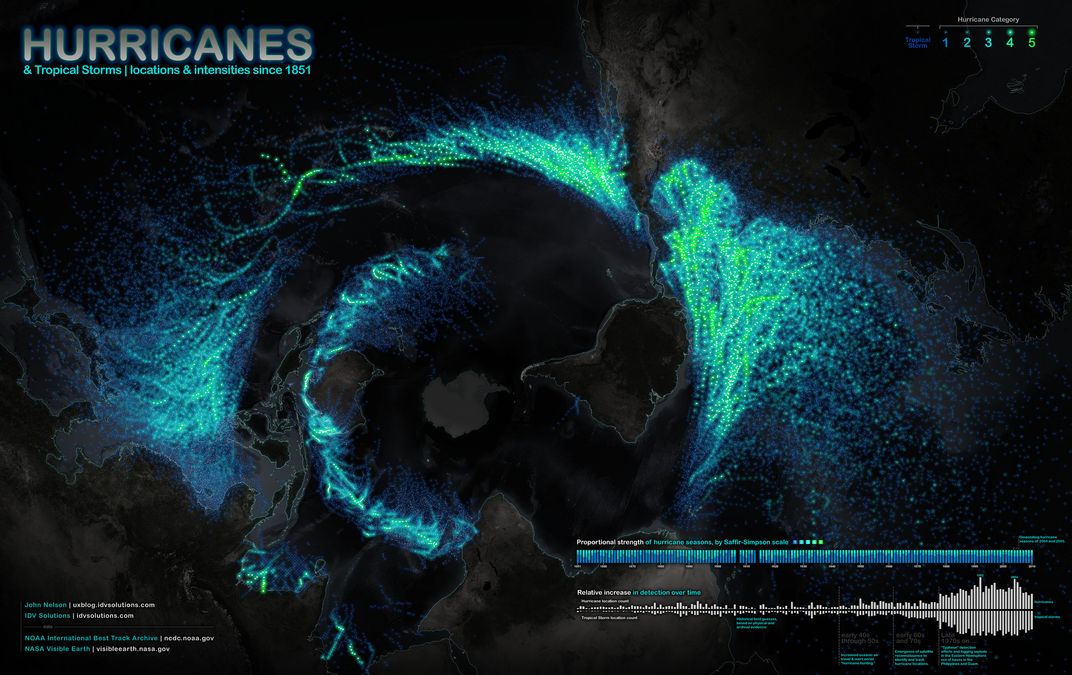The Tropics are Moving, And They’re Bringing Their Cyclones With Them
Over the past 30 years hurricanes have been hitting their peak intensities nearer to the poles
/https://tf-cmsv2-smithsonianmag-media.s3.amazonaws.com/filer/1f/7e/1f7ebd2e-928a-4ccc-a66e-65138beaa068/05_15_2014_hurricane_felix.jpg)
Hurricanes tend to occur in two big bands, with the big spiraling storms spinning up near the boundary between the tropics and sub-tropics on either side of the equator. Over the past 30 years, however, tropical conditions have been expanding, pushing out towards the poles at a rate of around 0.5 to 1 degree latitude per decade, says Roger Harrabin for the BBC--a shift possibly motivated by greenhouse gases or other pollutants. As the tropics have pushed outward, suggests a new study, so too have the hurricanes.

From 1982 to 2012, says Jason Samenow for the Washington Post, the “location of maximum storm strength leaped poleward about 33 miles per decade in the Northern Hemisphere and 38 miles per decade in the Southern Hemisphere.”
The exact rate of the change varies for different ocean basins, with there being only a muted, or even non-existent, effect in the North Atlantic ocean, says NPR. But, for the hurricane-active regions in the north and south Pacific, the Indian Ocean and elsewhere, the shift has had important consequences, says NPR:
In the region where Japan tracks cyclones, they are peaking 42 miles farther north each decade. That means cyclones that used to hit their strongest around the same latitude as the northern Philippines are now peaking closer to Hong Kong, Taiwan, Shanghai, Japan and South Korea, Kossin said. There are about 60 million people in Taiwan, Hong Kong, Shanghai and Tokyo alone.
Increasingly, strong winds and surging seas are buffeting regions unaccustomed to dealing with them.
Extrapolating the drifting hurricane tracks into the future, however, isn't something we can really do right now says NOAA scientist Tom Knutson to the Washington Post:
“We can’t regard it as a prediction of what will happen in coming decades,” Knutson says. ”It is more a call for further study to understand the changes to date."
/https://tf-cmsv2-smithsonianmag-media.s3.amazonaws.com/accounts/headshot/smartnews-colin-schultz-240.jpg)
/https://tf-cmsv2-smithsonianmag-media.s3.amazonaws.com/accounts/headshot/smartnews-colin-schultz-240.jpg)